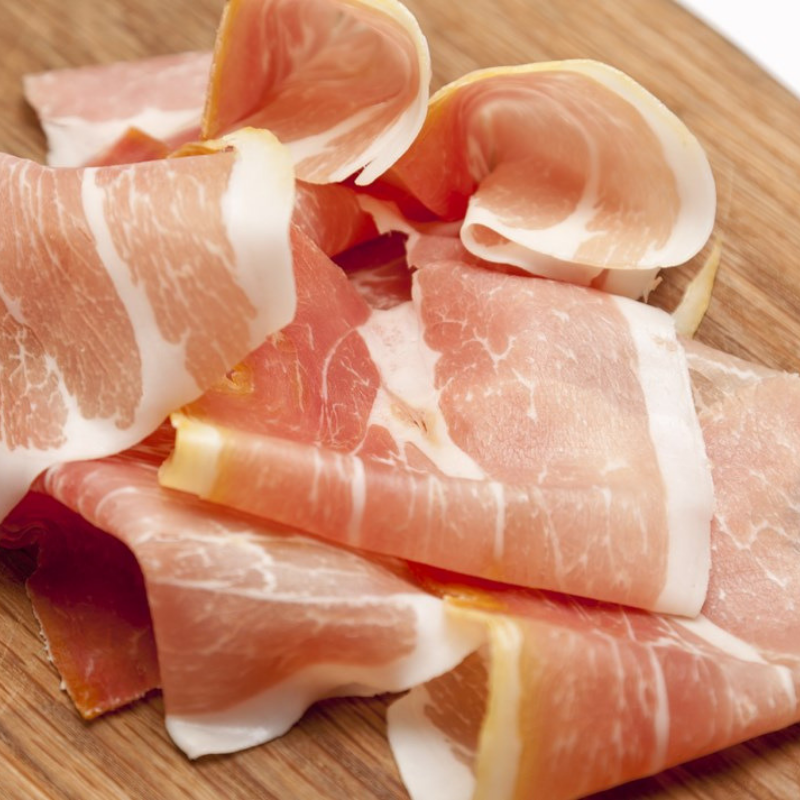Parma Vs San Daniele

WHAT IS PROSCIUTTO?
Prosciutto is an Italian unsmoked, dry cured ham. Like it’s Spanish cousin, jamon, prosciutto has been traditionally made the same way for over 500 years. There are many regions in Italy where prosciutto is made, but the most recognised are Parma and San Daniele.
Prosciutto, like jamon, is made purely from pork and salt. The slow drying process means no preservatives are required to stop the meat from spoiling.
PARMA Vs SAN DANIELE
The methods used in both Parma and San Daniele to create prosciutto are covered by Protection Designation of Origin (DOP in Italian). This means the methods they use are similar. However, the breed of pigs used, the diet they are fed, and the salting process differ enough to create a different flavour profile.
San Daniele prosciutto is often described as slighter sweeter and less salty. The legs are often smaller and contain more fat than Parma di Prosciutto. As there are fewer producers in San Daniele, it is usually more sought after, and as a result more expensive. There are nearly 200 producers of prosciutto in Parma, but only 30 in San Daniele.
The age of the prosciutto also contributes to changes in flavour. Older ham (20 months or more) will be drier and saltier, with younger legs (16 months) tasting more moist and balanced. Younger prosciutto can be more difficult to cut – read the slicing tips below to overcome this.
However, the quality of the producer will have a far greater influence on the quality of the end result. There are great producers creating both Parma ham and San Daniele. The only way to know what will suit your menu, is to try it.

WHO IS VILLANI
Recognised as one of Italy’s best producers of Prosciutto di Parma and other fine cured meats such as culatta, the Villani factory still sits in the heart of Castelnuovo Rangone, a small town 40 kilometres south of Modena. It is also home to the Villani family salume museum, Il Museo della Salumeria or MUSA, which is one of the region’s great tourist attractions.
In the 1930s, one of Costante and Ernestas’ sons returned from the USA with new technology he learned from the American meat industry – drying hangers – to help modernise salume production.
It is this ability to apply modern technology to age old techniques that allows Villani to overcome traditional problems. As prosciutto is aged, rancidity can become a problem. But by carefully controlling temperature and humidity, Villani creates prosciutto and other salume that have rich, deep, pure flavour, but with a clean tasting finish.
SLICING AND STORING PROSCIUTTO
Whether you slice your prosciutto by hand or on a slicer, the knife or blade must be extremely sharp. Sharpen your blade each time you slice a batch to avoid tearing the slices, particularly for younger legs.
Remove the skin before slicing, but ensure the fat is left intact.
If using a slicer, you’ll need to cut across the leg. If cutting by hand you can cut from top to bottom, giving a longer slice which incorporates both the sweeter trotter end, and milder fat end of the leg.
Prosciutto should always be sliced paper thin and served immediately.
Store tightly wrapped in the fridge for up to 40 days.
